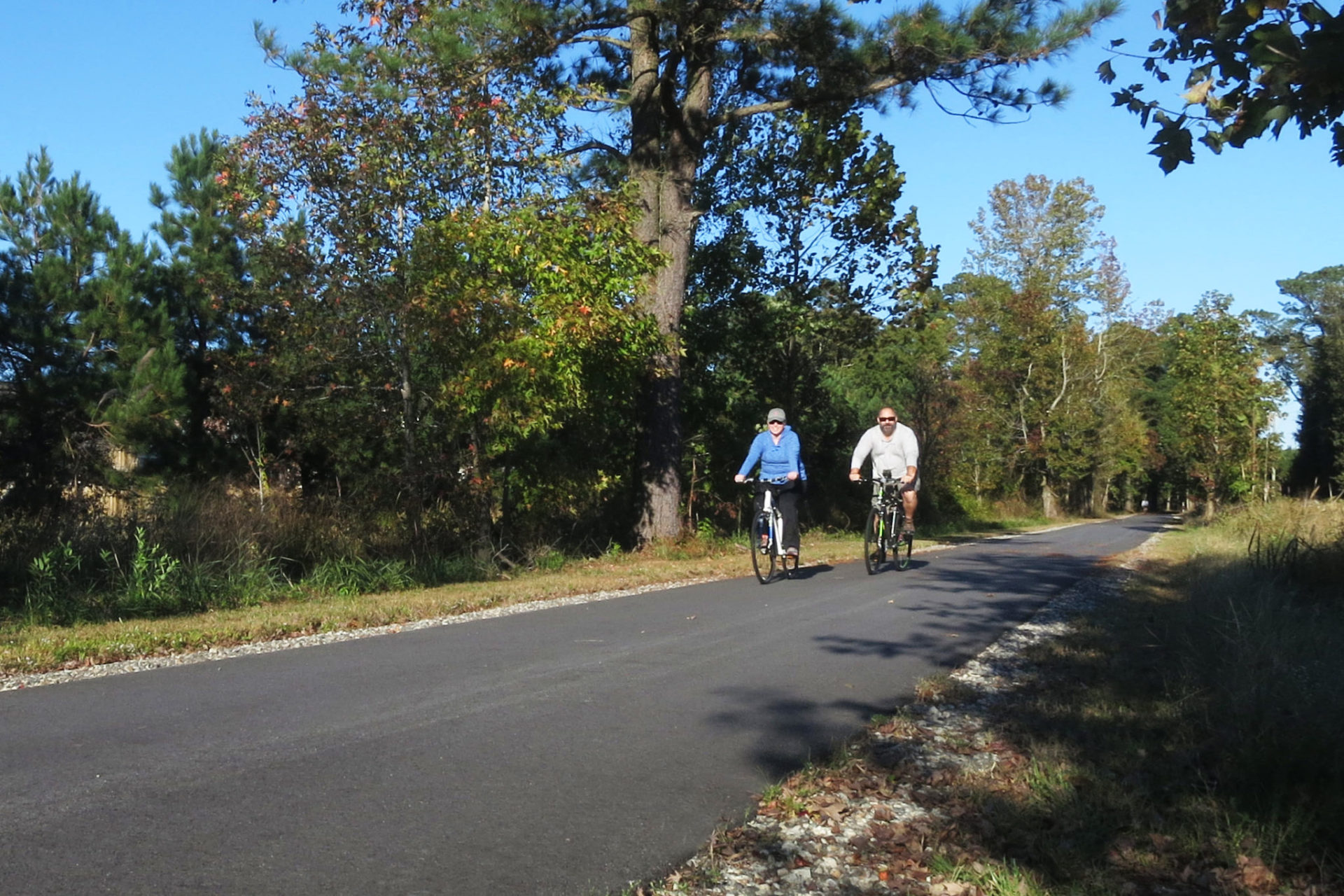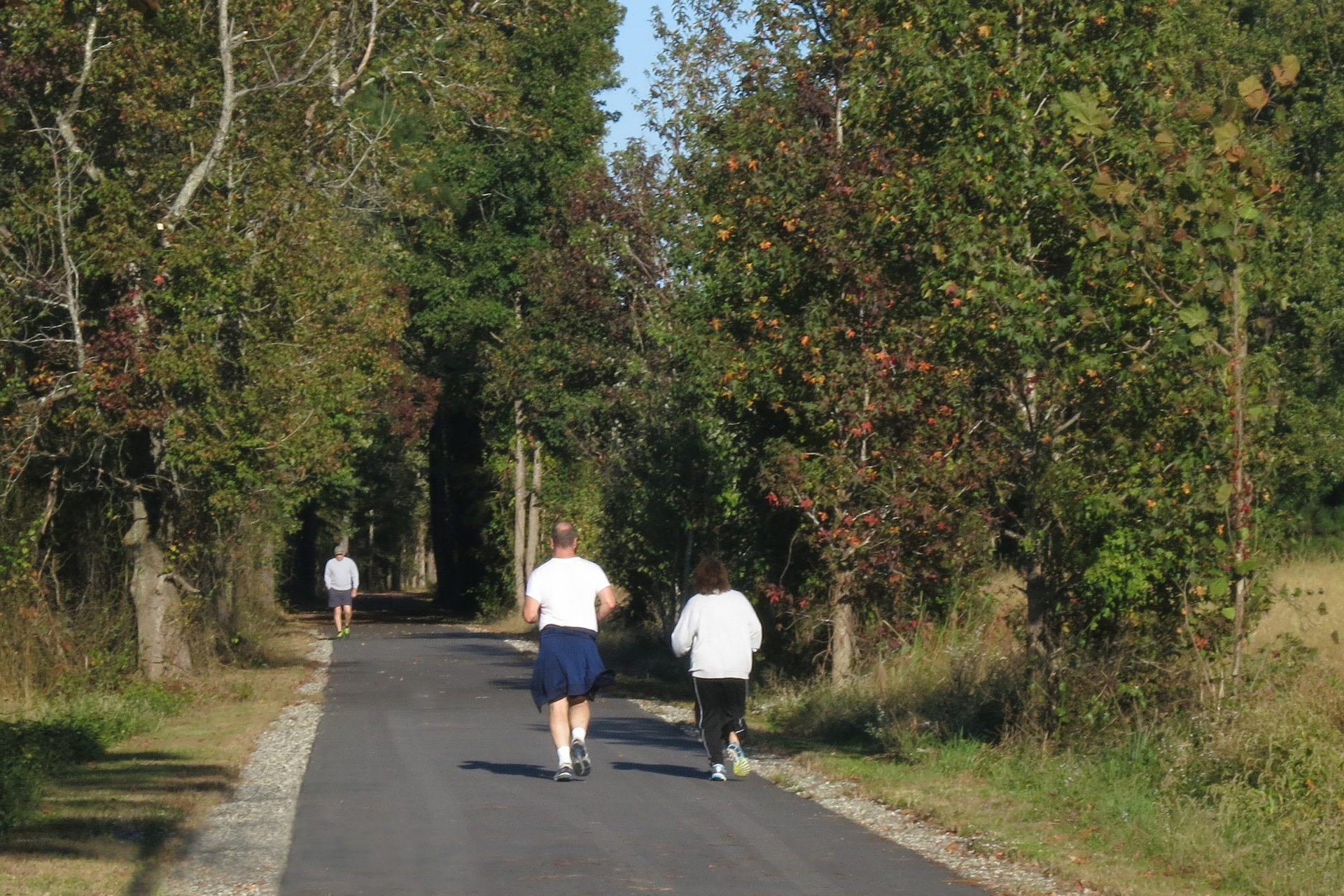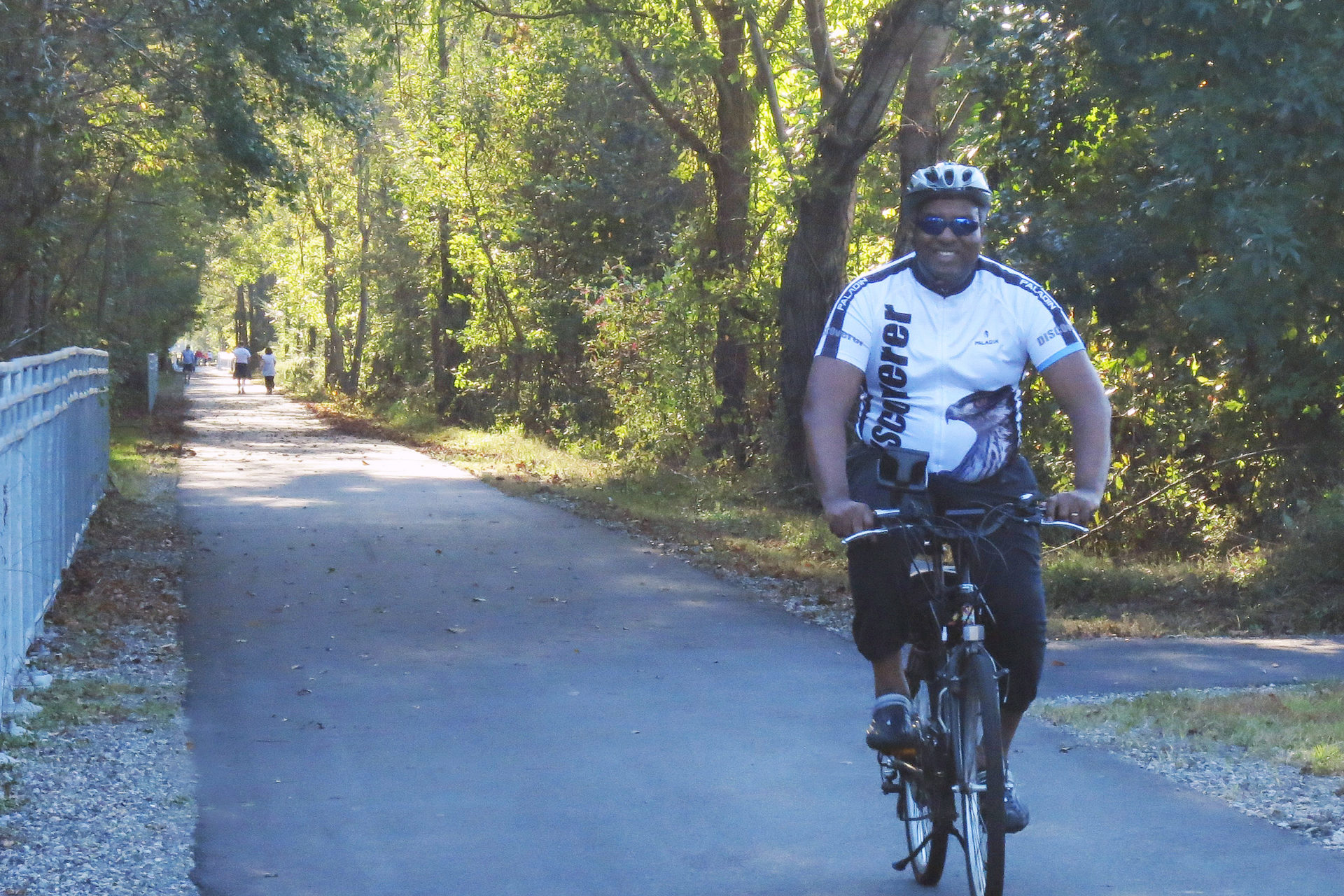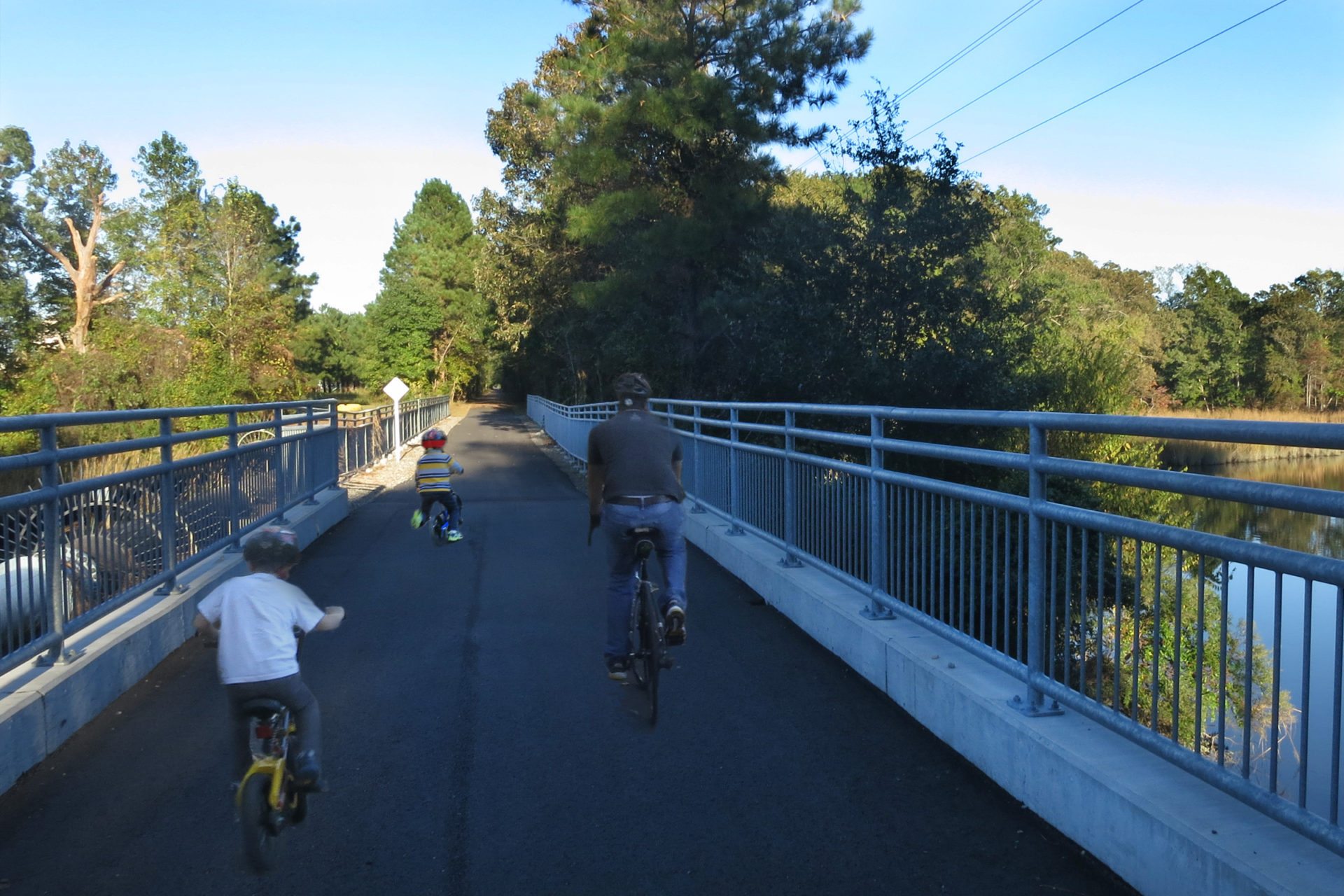As cities seek to revitalize urban cores and reimagine parklike public amenities, they are increasingly developing trail systems that connect residential neighborhoods with downtown – a popular solution that strengthens a sense of place and promotes healthy activity. The City of Suffolk, in conjunction with fellow Hampton Roads region cities including Chesapeake, Portsmouth, Norfolk, and Virginia Beach, has planned a 41 mile South Hampton Roads Trail that will ultimately create new connections throughout the area.
With these cities sharing a unified commitment to build healthy communities, Suffolk’s Seaboard Coastline Trail works toward that mission. Commissioned by the City of Suffolk to design Segment IV of the Seaboard Trail, Clark Nexsen’s transportation and environmental teams were tasked with envisioning a 3.3 mile stretch of the future 11 mile multimodal trail.
The approach to this project integrated key pillars of sustainability: environment, social, and economics. By crafting a design that retained existing grade elevations where feasible, preserved existing drainage, and repurposed the existing bridge, our team minimized impacts on the natural vegetation and environmentally sensitive areas. As a result, the completed trail provides an inviting natural space for family-friendly, recreational activity, balancing site amenities with protecting our natural resources.
On October 15, 2015 the City held a ribbon cutting ceremony to celebrate the opening of the 2.3 mile segment of the trail from The Village of Driver to Shoulders Hill Road. The ceremony was attended by City of Suffolk Mayor Linda T. Johnson, City Manager Patrick Roberts and members of City Council, as well as members of the Tidewater Biking Association and dozens of citizens eager to take their first bike ride, skate or stroll along the new trail. The final one mile segment from Shoulders Hill Road to the City Line was completed in December 2016.
Today, this segment is a generous, 10 foot wide, paved multi-use trail that winds through rural scenery and traverses an existing railroad bridge, refurbished as a pedestrian bridge to minimize environmental impact. Featuring amenities such as benches, pet waste stations, and a bicycle repair station, the trail runs from the Village of Driver to the Chesapeake city line. Ease of access was an important consideration during the design process, with our team creating a layout that makes the trail accessible from each end point via two trail heads that include parking facilities. Completion of this project represents a significant contribution to the realization of the regional South Hampton Roads Trail and an improved quality of life for the area residents.
The project received Honorable Mention for the 2016 APWA Mid-Atlantic Chapter’s Project of the Year Award for the category of Transportation Less than $5 Million.
Awards
APWA Mid-Atlantic Chapter Award, 2022



